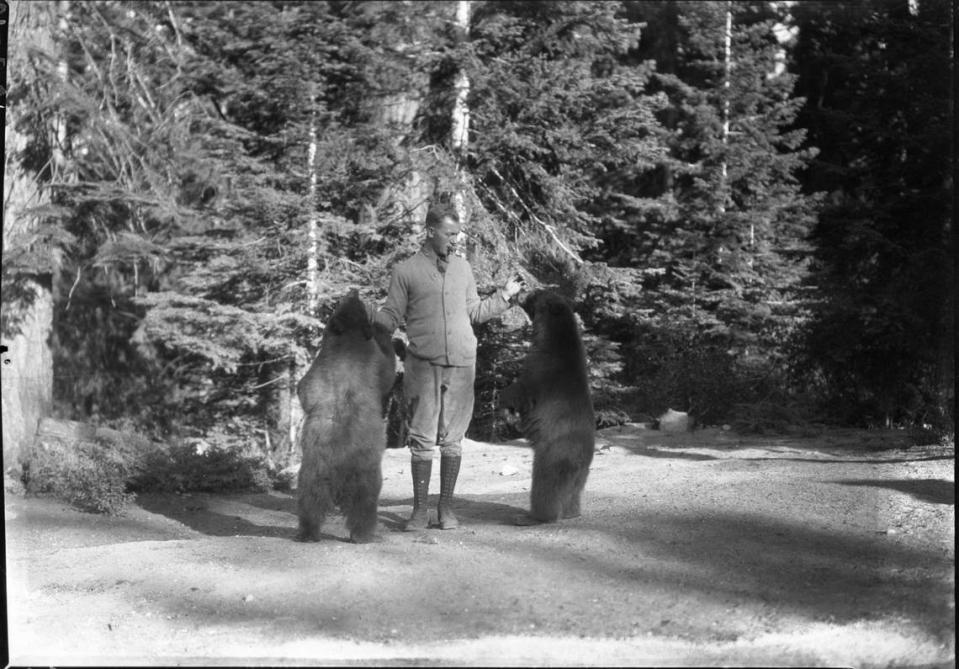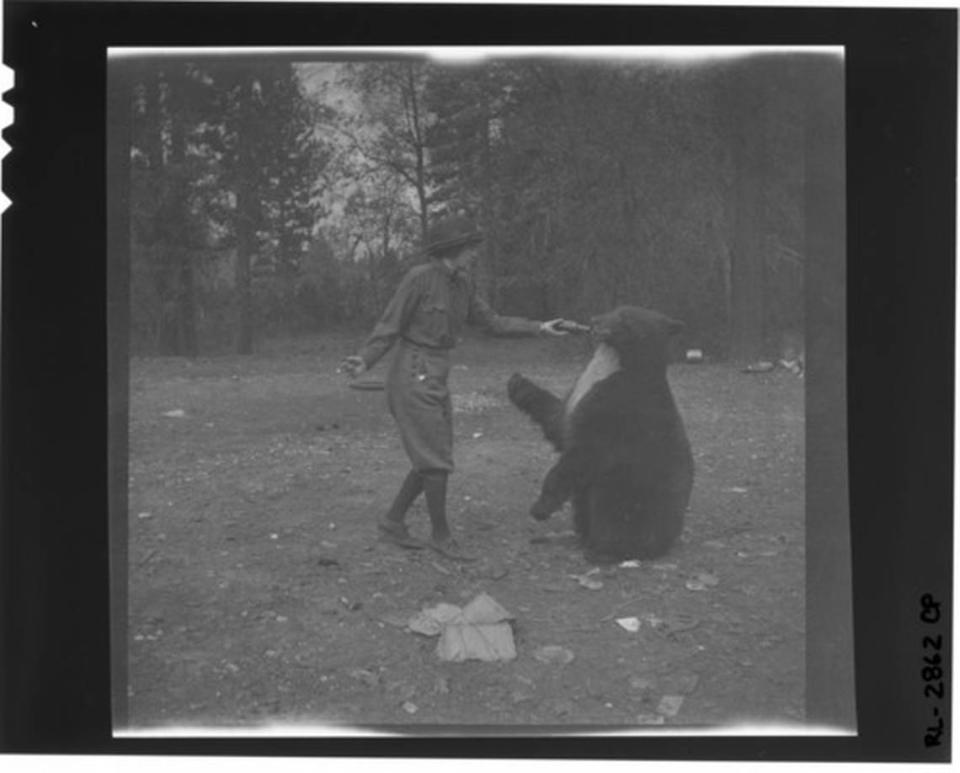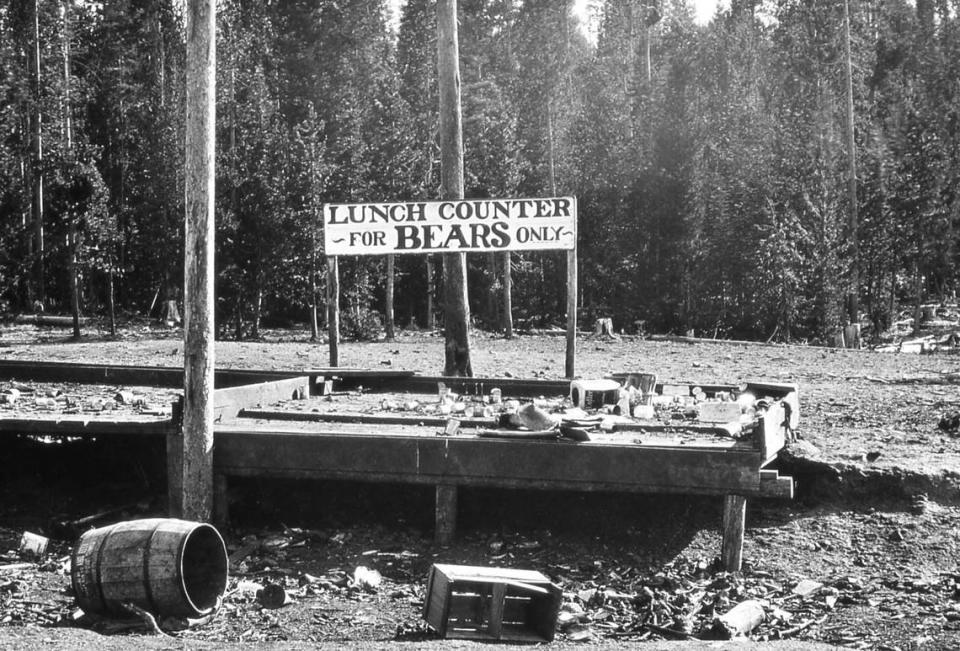A garbage feeding pit for bears? That used to be a popular national parks attraction
Don’t feed the bears.
National park rangers have for years warned tourists against feeding or getting too close to bears.
Food must be locked up in bear-safe storage. Bears have been euthanized after getting their paws on human food. And some people have even faced jail time after coming within feet of bears.
But in the early 1900s, it was a different story.
“Can you imagine a version of Sequoia and Kings Canyon National Parks where garbage is deliberately laid out for bears, so visitors can gather around and watch them eat it?” park rangers said Jan. 19 on Facebook.
That’s what happened at different parks across the country. Tourists would line up to see bears feast on garbage that was purposefully dumped for them, park rangers at Sequoia and Kings Canyon in California said.
Park visitors would pack into bleachers in a small, arena-like area to wait for the show. Only a barrier as tall as some people’s legs would separate the onlookers from the hungry bears, archive photos show.

Some park rangers would walk right up to bears and feed them out of the palm of their hands. In Yosemite National Park in California, a woman even fed a bear from a bottle.

Parks in California weren’t the only ones luring bears to popular tourist spots.
In Yellowstone National Park, a “lunch counter for bears only” garbage pit used to sit near Old Faithful, a place many tourists gather to watch the famous geyser erupt.

At the time, park managers didn’t realize the bears’ reliance on human food could lead to severe bear-human conflicts.
In the 1930s, officials began to call for park visitors and rangers to stop purposefully feeding the bears, according to The Washington Post.
Conflicts between people and bears had become more common, and many bears were killed for becoming a “nuisance,” the newspaper reported.
In Yellowstone, park officials recorded at least 48 injuries from bears each year and more than 100 incidents of property damaged by bears between 1931 and 1969, according to the National Park Service.
Since Yellowstone banned the intentional feeding bears, the average number of injuries from bears dropped to only one a year in the 2000s. Only about 15 reports of property damage from bears were recorded during that time as well.
Feeding bears in national parks today
“Today, respecting the wildness of bears and other creatures by giving them plenty of space and never, EVER feeding them is a guiding principle of wildlife management in national parks,” park rangers at Sequoia said.
When bears eat human food, they can lose their preference for natural food sources, the National Park Service said. The bears can also become less fearful of humans.
“Over time, these bears may begin approaching people in search of food,” the National Park Service said. “They can become aggressive, unpredictable, and dangerous.”
Oftentimes bears that eat human food are euthanized because they pose a risk to public safety, park officials said.
That happened as recently as October when a 4-year-old grizzly had to be killed in Grand Teton National Park after it used “bold behavior” to get food. The bear broke into bear-resistant dumpsters within the national park.
It’s now required that tourists and campers lock up their food in places where bears can’t get to it. Regulations change depending on the national park and what types of bears roam the area, but visitors are responsible for keeping their food away from the animals.
Food has to be left at an arm’s reach while tourists picnic, and it can only be kept in cars with windows closed during daylight hours, park officials said.
“Not following those rules may result in fines, confiscation of food, towing of cars, or other penalties to protect visitors, property, and bears,” the National Park Service said.
Viewing bears in national parks today
Bears are no longer lured to viewing locations at national parks, but they can still be spotted where they eat.
“The best places to see bears are those locations where they can find food at that time of year,” park officials said. “For example, bears are often in meadows digging up grasses and roots in the spring, while in the fall you may see bears high in oak trees consuming vast quantities of acorns.”
The National Park Service wants all park visitors to stay at least 300 feet away from bears and let bears eat their natural food sources.
If tourists see bears they should talk calmly to the bear so it knows they not a prey animal, stay calm and try to look as large as possible.
People can walk away slowly and sideways. Running will trigger a bear’s instinct to chase a fleeing animal. It’s also not a good idea to climb a tree because grizzlies and black bears can also climb.
“Seeing a bear in the wild is a special treat for any visitor to a national park,” the National Park Service said. “While it is an exciting moment, it is important to remember that bears in national parks are wild and can be dangerous.”

 Yahoo Movies
Yahoo Movies 
